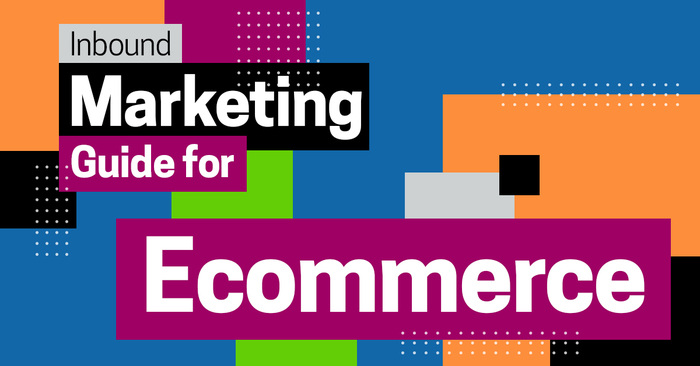Inbound marketing has become a buzzworthy phrase in the marketing industry. This should come as no surprise as its customer-centric approach to marketing continues to help brands cut through the noise of a busy online marketplace to effectively reach their target customers. While many ecommerce brands typically rely on digital advertising to showcase their products, there is a lot of opportunity for ecommerce brands that want to take an integrated approach to reaching their target audience and getting the word out about their products through inbound methods.
In this guide, we’ll provide more details on the inbound marketing methodology and why it works so well for ecommerce marketing. Then, we will provide some basic tips and best practices for getting started with building an inbound marketing strategy and implementing these successful tactics for your ecommerce brand.
Why Inbound Works for Ecommerce Marketing
First, let’s talk about why inbound marketing works for ecommerce companies. The inbound methodology is all about bringing your ideal customers to you through quality content and other points of interaction. Rather than showing your audience an ad and waiting for them to click, you are instead building a library of informative, interesting, and valuable content that will help you build trust and stimulate interest within your target audience.
To better understand how this works, let’s look at HubSpot’s ecommerce inbound methodology map:

Here you can see the steps that your prospects take as they go from strangers to promoters. During each stage of the process (attract, convert, close, and delight), you will see different types of corresponding content that can help you establish and build relationships with your ideal customers. The goal here is not to make one sale, but rather build a long-term relationship with customers who become loyal brand advocates. This provides a much higher return on investment (ROI) than just a single sale.
One of the reasons why inbound marketing is so important for ecommerce companies is that it helps them build a brand that customers can connect with. Rather than just selling products through an online store, ecommerce companies can develop a brand with a distinct voice that is focused on its customers. By building a robust brand that customers can understand and connect to, ecommerce companies can set themselves apart from other shops that only aim to sell products.
How to Get Started with Inbound Marketing for Ecommerce
Inbound marketing has many different facets that can take a little while to get the hang of. Before you start creating content and engaging with your leads, you need to take some basic steps to make sure that you are setting your ecommerce company up for success with inbound marketing.
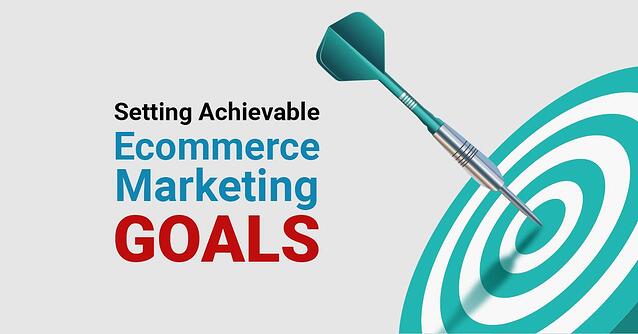
Source
Before you can start accomplishing your marketing goals, you need to clearly define what they are. Developing marketing goals that align with your overall business objectives is one of the best ways to ensure that your marketing is working for your business. For best results, be sure to set SMART goals that are Specific, Measurable, Attainable, Realistic, and Timely.
Your team can refer to these goals when developing new marketing campaigns to make sure that you are staying on track. After some time has passed, you will need to measure your campaign progress to make sure that you’re consistently meeting these goals. Your goals and which tactics you use to meet these goals will change over time.
Researching Your Target Market
Since inbound marketing focuses on the customer, it is essential that you know who your customers are before you start developing marketing campaigns or creating content. The first step to understanding your customers is to do some research on your target market. This will help you identify certain demographics and characteristics such as age, gender, location, income, etc.
If you really want to get to know your customers, you will have to go beyond general market research. One of the best ways to find out what your target buyers value is to ask them. You can do this through customer surveys or interviews. Create a list of questions that help you better understand your target audience’s needs, desires, values, and behaviors. To encourage more customers to participate in the survey, you can offer some type of incentive such as a discount or coupon.
Developing Buyer Personas
Once you have collected enough research on your target market, it is time to create buyer personas. Buyer personas are generalized profiles of your ideal buyers that help you better understand who you are speaking to when developing your inbound marketing content. Your company should develop a buyer persona for each type of buyer that you target.
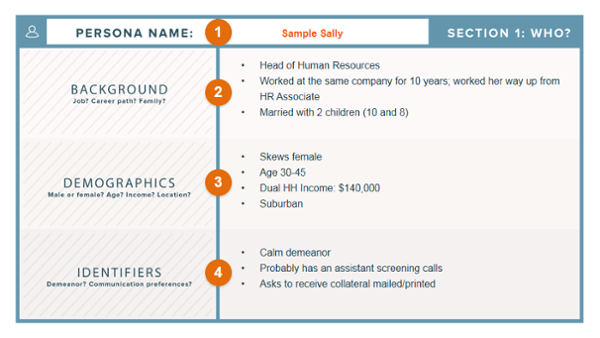
Source
- Buyer demographics such as age, location, gender, and salary.
- Buyer’s role in their company, family, community, etc.
- What the buyer hopes to gain from buying products like yours.
- The buyer’s biggest challenges and pain points.
- A general story about your buyer and what might bring them to you.
For example, let’s say that your ecommerce business sells products that are targeted toward mothers. Though there are some general characteristics that all your customers may share, there may be different types of mothers that you sell your different products to like first-time mothers, mothers on a budget, and fashionable mothers. Your team would build buyer personas for each of these customer types in order to better understand who they are and why they buy.
Understanding the Buyer’s Journey
In addition to identifying your buyers and better understanding what motivates them, you also need to consider the buyer’s journey, or the process that these buyers take when making a purchasing decision. In order to determine what path your buyers take to find products like yours, you will need to do a little research to discover how they become aware of products, how they compare different products, and how they decide which products to buy.

Source
Ecommerce Content Marketing
Content is a vital piece of your inbound marketing strategy. By creating quality content that is both compelling and valuable, your ecommerce company can showcase its knowledge and thought leadership while also helping show your brand’s personality.

Before you dive into creating content, it’s important that you develop a content strategy that identifies what types of content you will use to reach your audience and what topics or products this content will cover. Identify which team members will create this content or find a company that you can outsource your content creation to. Once you have a team in place, you will want to make sure that your content creation efforts are consistent by developing a content calendar and sticking to it.
The most effective content strategies include diverse types of content that help capture the audience’s attention and inform them about important products and other details. Below are a few different types of content that can help you reach your target market while informing, engaging, and delighting your ideal customers.
Blogs
Blogs are an effective platform for educating your audience and showcasing different products. Instead of aiming to sell products, your blog posts should focus on providing information that can help consumers better understand if the product is the right one for them. Though you want to avoid “salesy” language, you can still link to your product page in the blog to make it as easy as possible for consumers to take the next step by purchasing.
In addition to writing about newly launched products and featured brands, you can also provide additional content on topics that are relevant and interesting to your target customers. For instance, if your company sells sports equipment, you might create blog content that discusses new sports technologies or describes recent stories about athletes who inspire.
Though many blog posts are on the shorter side (about 500 words), you may also want to create more long-form posts that go into further detail about important topics or products. You can also include visuals in your blog content to help draw readers in and keep them interested. Professional product photos or photos and videos of people using the products are often effective.
Social Media
Social media is another ecommerce marketing tactic that you can use to reach and engage your target consumers. With 2.789 billion active social media users across the globe, channels like Facebook, Instagram, Pinterest, and YouTube are great platforms for starting a conversation with your audience and keeping them engaged during the buyer’s journey. Social media content is also a great way to showcase your brand’s personality and start to build relationships with your customers and prospects.
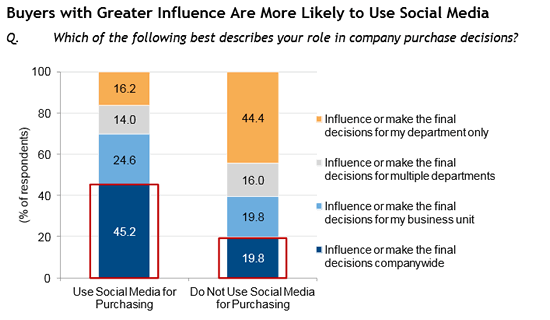
Source
When developing social media content, make sure that your team uses a voice and tone that is consistent with your brand identity. Your goal is to create a mood that helps visitors understand who your brand is and why it’s valuable. In addition to company news and updates, you can use social media to post photos of products, demonstration videos, blog content, and any other information that your target buyers will find relevant and interesting. These channels are also effective for promoting upcoming sales or sharing discounts with your followers.
You can also use social media as a channel for providing customer service, which will help you keep customers happy during the delight phase of the inbound journey. Good customer service can work wonders for your brand building as long as it’s carefully managed. Make sure that any responses your team makes to customers are consistent with your branding and remain positive.
Videos
Video is another powerful content medium for your ecommerce marketing strategy. Not only can videos help catch the attention of your busy audience, but they are one of the best mediums for explaining product details or demonstrating how a product works. In fact, according to an Animoto survey, four times as many customers would rather watch a video about a product than read about it through product descriptions or other written content.
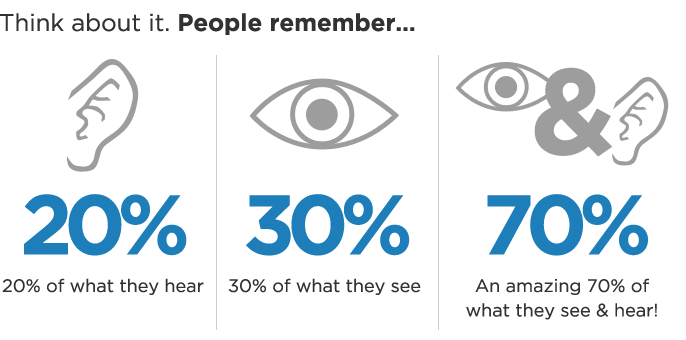
Source
The most effective video content is professionally produced and helps tell a story. If you do not have a professional videographer on your team, you might want to consider hiring outside help to develop your product videos. If brands provide videos for the products you sell then you might consider using these videos to help promote the product on your own website and social media.
Once you have created these product videos, be sure to upload them to your company’s YouTube account. YouTube has over a billion users, which accounts for almost a third of people currently using the internet. This presents an excellent opportunity for ecommerce brands that want to improve their online reach and engage their target audience.
Product Guides
Product guides are an important content resource for ecommerce companies. These guides provide more details about your products, how to use them, and what value they can provide to consumers. Product guides also contain other helpful information such as product images, prices, and descriptions. Many guides will also provide product comparisons that help consumers make a more informed purchasing decision.
Though product guides may take time to develop, they are an invaluable resource to consumers because they can help guide them to the purchasing stage of the buyer’s journey. Rather than printing expensive catalogues, your company can create online product guides that are easy to update and include links to specific product pages, making the purchasing process as easy as possible.
Promoting Your Content
No matter how great your content is, it will not be effective unless it reaches your target audience. In addition to planning out which types of content your team will create and what topics you will cover, you should also develop a promotional strategy to get your content in front of the people who are most likely to be interested in your brand.
Social media and email marketing are two of the best ways to promote your content. By sharing your content on your social media channels and showcasing it to your current customers and prospects through email, you can help get the word out about your content and products to those who have already shown interest in your ecommerce site.
Though paid advertising is not necessarily an inbound marketing tactic, you can still take an integrated approach to promoting your content by using PPC ads and paid social media campaigns. These ads help get your content in front of consumers who may not be familiar with your brand but are looking for the types of products that you sell.
Search Engine Optimization for Ecommerce Marketing
Search engine optimization (SEO) is another important part of your inbound marketing strategy. SEO is the process of optimizing your website and content for the search engines in order to make it easier for potential customers to find your site.

Not only does SEO improve your online reach, but it also helps ensure that the traffic that is coming to your website is relevant. Below are just a few aspects of your ecommerce site that you will want to consider while optimizing your content.
Product Descriptions
Each of your product descriptions should contain unique and relevant copy. Rather than just using the description given by the manufacturer, take the time to create your own descriptions for each product that are clear and compelling. This will be a time-consuming process. However, it will pay off in the end as you will be able to align each of the descriptions with your brand’s voice. Not only are unique product descriptions more enticing for the consumer, but they also help improve SEO, which can help boost traffic to each page.
Image Alt Tags
On your product pages, there will be many different images to showcase your products. In order to help search engines understand what these images depict, you will need to create alt tags for each image. The alt tag should be simple while clearly describing what the image depicts, including both the manufacturer and product name. For instance, “Black Prada Galleria Bag” is short, simple, and descriptive enough to explain what the image presents.
Title Tags
Title tags are another important aspect of SEO for ecommerce marketing. Title tags refer to the title of the webpage and can be found at the top of the web browser, within the source code, and sometimes even on the search engine results page (SERP). Google limits what appears on the SERP to 70 characters, so use these characters wisely when describing what appears on the product page.
Final Takeaways
Overall, inbound marketing is a great way to bring the consumers who are most likely to be interested in your products to your ecommerce site. Though there are many facets to your ecommerce marketing strategy, the best way to set your company up for success is to do your research and develop a strategy before your move toward implementation.
Feature image by Tech in Asia



